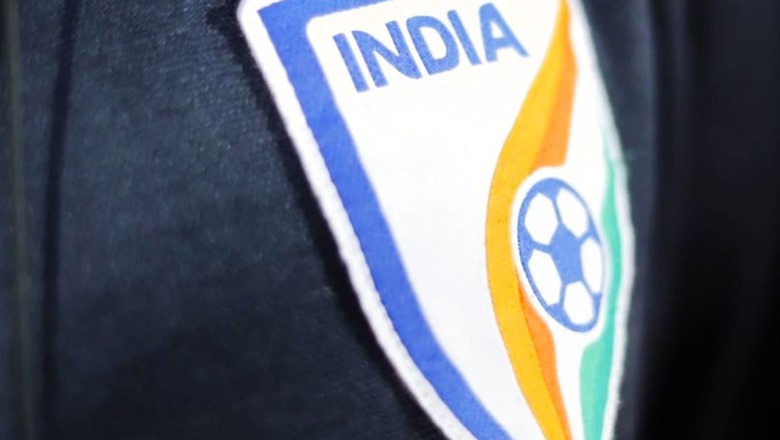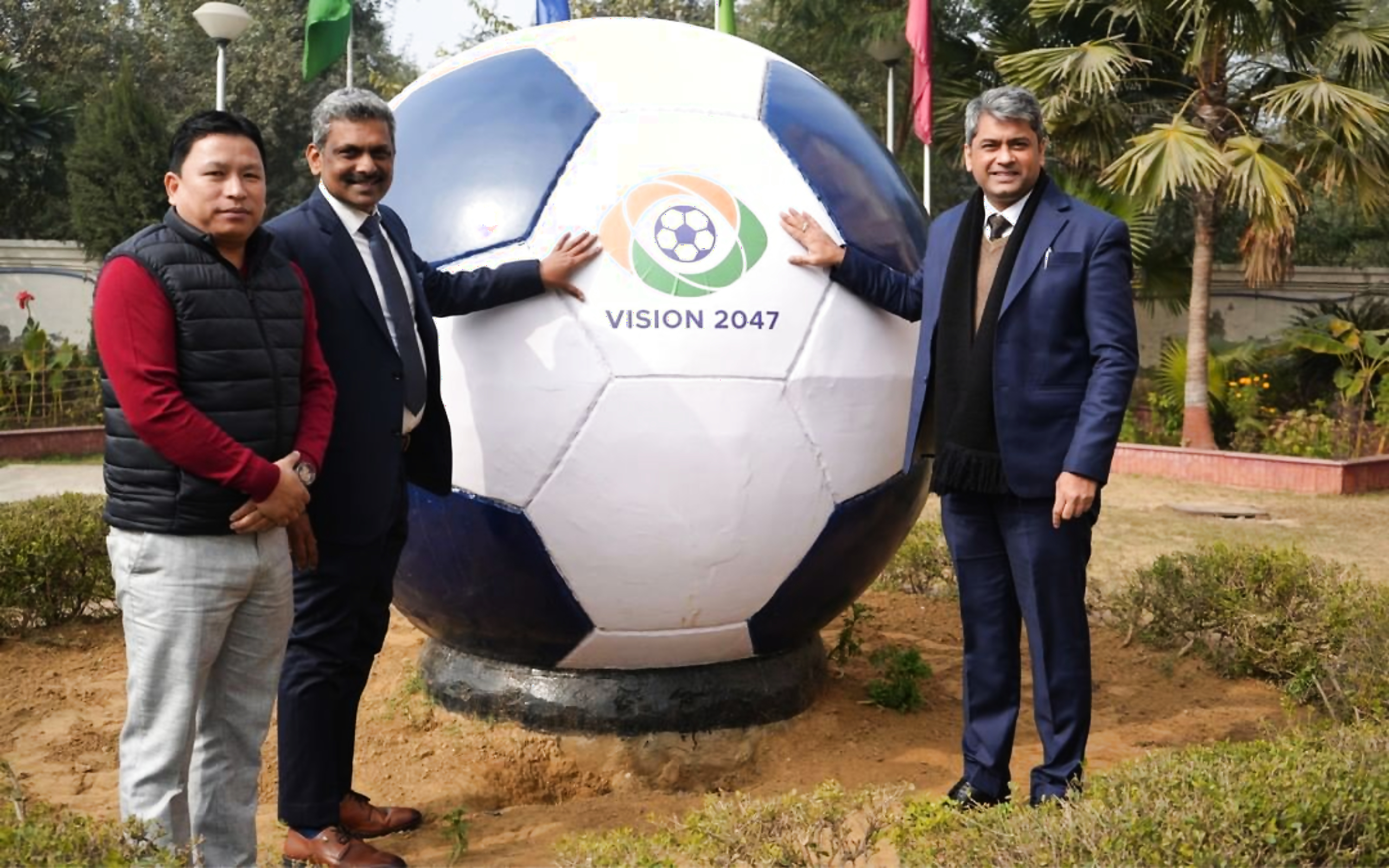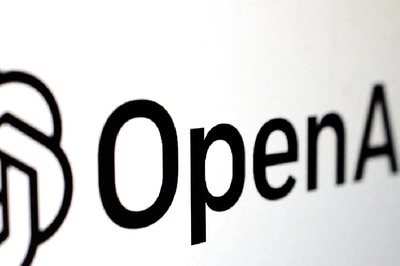
views
It’s been one month since the FIFA World Cup in Qatar. One month since the Asian and Arab teams scripted history. And one month since millions of football fans across India asked themselves: when will India play in a World Cup? Well, qualifying for World Cup is an end product of a process. A process that includes a strong footballing culture, elite football structure from the grassroots, a huge number of matches, and a large pool of highly qualified coaches and players. For India, despite the game’s reach expanding and some positives from recent years, there’s a lot of work to be done on all of the parameters.
The All India Football Federation (AIFF) in that regard launched a new 25-year strategic roadmap ‘Vision 2047’ earlier this month with hopes to revolutionise the game in the country.
“To make football an incredible sport for incredible India by building an ecosystem that would be a value proposition not only for India but for the world,” precisely is the vision of the 2023-2047 long-term plan.
Also Read: Top Indian Wrestlers vs WFI – A Timeline of Events
Ensuring 55 games for a player across competitions by 2047, a five-level league pyramid for senior men, a four-level pyramid for women, vastly expanding coaching pool, having FIFA standard stadiums, building national centre of excellence, reaching 35 million kids by 2026 through grassroots programmes, all member associations (MAs) adopting good governance practices to forming a national football philosophy, the strategic document makes a lot of right noises.
However, Indian football has been here before. In 2012, the AIFF had launched a similar roadmap ‘Lakshya 2022’. It’s no secret we missed the lakshya. But with a change in guard, a new president (Kalyan Chaubey), and a new executive committee, there’s a renewed enthusiasm around what direction football will take in India. Despite this, the challenges largely remain the old; the execution, consistency, and coordination among member associations and the federation.
MAs’ capacity building and support
The footballing administration in India is complex with various layers to it. While the AIFF sits at the top, the state and district associations are largely responsible for what happens at the grassroots. The strategic document reveals that 11 out of 36 don’t conduct state top division for men. The reality for senior women and at the youth level across genders is even grimmer.
The strategic plan places the adoption of good governance practices by MAs and them giving a special focus on women’s football as a vital objective. However, at the same time, what could decide how well MAs do with the other proposed adjectives is the capacity building the national federation provides. It’s also important for the AIFF to take the vision to the last member of the football community and make all of the stakeholders buy into the idea.
“The devil is in the details. They have done pretty well with the entire roadmap; it is very detailed and looks very ambitious. But what strikes me is that if it’s the national team, or the national competitions the onus is on AIFF but when it comes to going to the bottom of the structure, to the state and district level, that’s where more education and coordination is required. It’s not impossible, but the most important factor will be how the entire thing will percolate down to the bottom. You have to make all stakeholders buy into your idea. If that can be managed, even if ambitious, the targets can be achieved,” says Henry Menezes, former India goalkeeper and ex-deputy chairman of the AIFF technical committee.
A lot of administrative posts at the associations are honorary appointments, while there are other foot soldiers who dedicate their time and resources without getting anything in return. A revamp of sorts in this regard, ushering in a more professional setup leading to greater efficiency, participation and accountability would make sure there’s rapid progress toward the goals.

“Having a professional setup not only at the federation but also at the state and district level is very important. We need to empower the local associations and have the right people doing the job. People who are working at the bottom level are doing it for the love of the sport. It’s not really a paid paid job but if we can make that some sort of a professional setup, that is going to help a lot,” says former Bengaluru FC CEO Mandar Tamhane.
“All the relevant stakeholders have to work together. From the top to the taluka associations, the clubs, AIFF, and marketing partners FSDL, It has to be a consolidated effort from all entities. In the end, the main motive for everyone involved is to help the game grow and so it will require a team effort.”
Another method to increase the overall efficiency of the system is to give targets to associations and later reward them for doing change-making work. However, the current structure where MAs vote to elect the members of the AIFF executive committee may not allow such an incentive-based programme to thrive.
“Why not put the onus on the associations? Ask them to change their competition structures and host more matches. Let the associations implement your plan and create healthy competition. The associations that do well get more of the support and funding, ” says football coach and broadcaster, Pradhyum Reddy.
Focus on specific states
For the national teams, the roadmap sets an objective of the men’s team entering the top 10 in Asia and the top eight for the women’s side by 2026. Also qualifying for FIFA U17 World Cup (men and women) on merit in the next four years. It also promises a minimum of 35 matches for youth men and 14 for youth women by 2027. No doubt, these objectives look highly ambitious when compared to the present scenario.
There is a method to make big gains in short term though. And that is to put a larger focus on well-doing associations in the initial years while laying the foundation for other MAs.
“You’re relying on your members to vote so you obviously want to kind of keep everybody happy but the reality of it is you should be investing in focusing your attention on areas where there is genuine progress happening. Mizoram has improved its structure despite not getting any money, they produce a lot of players. Manipur is doing the same. Why not focus on investment opportunities in these states,” suggests Reddy. “Put your resources into areas where you can get a return in the short term. In areas where there’s nothing happening, let’s try and plant some seeds. You can’t have a sort of one-size-fits-all solution”
Financial worry
While a holistic approach would be required to reach the objectives, the biggest role would be that of the finances. Every effort would require a considerable amount of spending from the federation and associations. Currently, the AIFF generates a revenue of Rs 80 crore with marketing partners Football Sports Development Limited (FSDL) being the biggest contributor besides various grants.
To generate the required revenue and to create sustainability on the financial front, the AIFF will be building an in-house business and marketing vertical to boost its brand and later leverage its power. Also, to enhance engagement, increase the following of the sport, and bring in more money into the system.
The federation should look to start new competitions and revive old tournaments in order to generate more revenue, something that the roadmap also points out.
“There’s money in the system, it is just not channeled properly now. Parents in metro cities are spending thousands a week on their children to get football training. But there’s no place for them to play. Be the facilitator, organise the matches. Let teams and players register, you can ensure matches and generate revenue. The ISL and I-League clubs are also spending crores every season. It’s just that the money is not trickling down,” adds Reddy.
Eventually, for AIFF to reach its ambitious target of increasing AIFF revenue by 500% by 2026, the member associations will have to be empowered in that way so that they can build brands, market them and bring in sponsors.
“When it comes to generating revenues, the mantra should be to teach a man to fish instead of giving him a fish,” Menezes says.
Important to stick to plans
And even if everything falls into the place, the objectives can’t be achieved without being relentless and consistent. Cliched as it may seem, there’s no shortcut to success. Eventually, an AIFF president can only have a maximum of three four-year tenures. Office bearers will come and go, but the success of the roadmap will depend on how intrinsically it gets embedded into the practices of the federation and how consistently the organisation sticks to its long-term plan.
“The Asian countries that are doing well at the top level, they have had a vision for a long time and have been working towards executing it. Change cannot happen overnight. We need to stick to the pathway that has been defined rather than having another change in ideas and management four-five years down the line. That will be the challenge, to maintain the consistency,” adds Mandar.



















Comments
0 comment